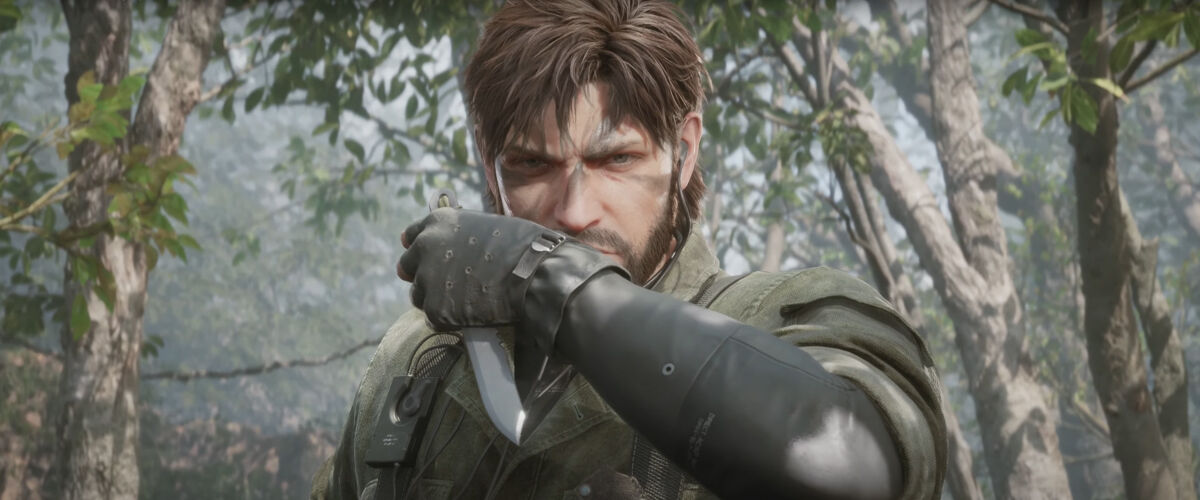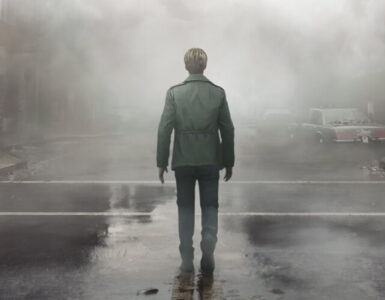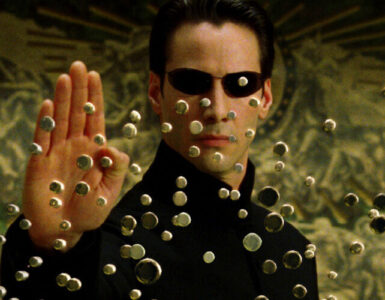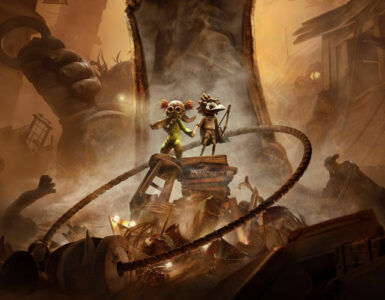Remaking any gaming title can be a tricky balancing act, especially one that was beloved in its heyday. On one hand, developers can modernise an older title, adding new gameplay systems that bring it more up to speed with the current crop of titles, but this risks the possibility of devoted fans lamenting the changes and how it deviates from the original vision. On the other hand, the game can be kept completely as is, barring a graphical upgrade, but this also poses another risk, that some aspects may not hold up as well as they did in the past.
For Konami’s Metal Gear Solid Delta: Snake Eater, the team has adopted the latter approach when it comes to remaking its legendary 2004 stealth-action title, Metal Gear Solid 3: Snake Eater, preserving the experience in nearly its entirety, so while this is still every bit the masterpiece it was before, there are some aspects of the game that have aged in the last 21 years, even if this is one that fans and newcomers alike can treasure once more.
Originally led by renowned gaming mind Hideo Kojima (Death Stranding) and his team, Metal Gear Solid Delta’s narrative has been left nearly untouched from the original, except for its Unreal Engine 5 graphical touch-up. This does make sense, as with the departure of Kojima in 2015, adding any new elements, no matter how small, or changing existing narrative details in any capacity might not pay the proper respect to the title’s original vision, nor sit well with fans.
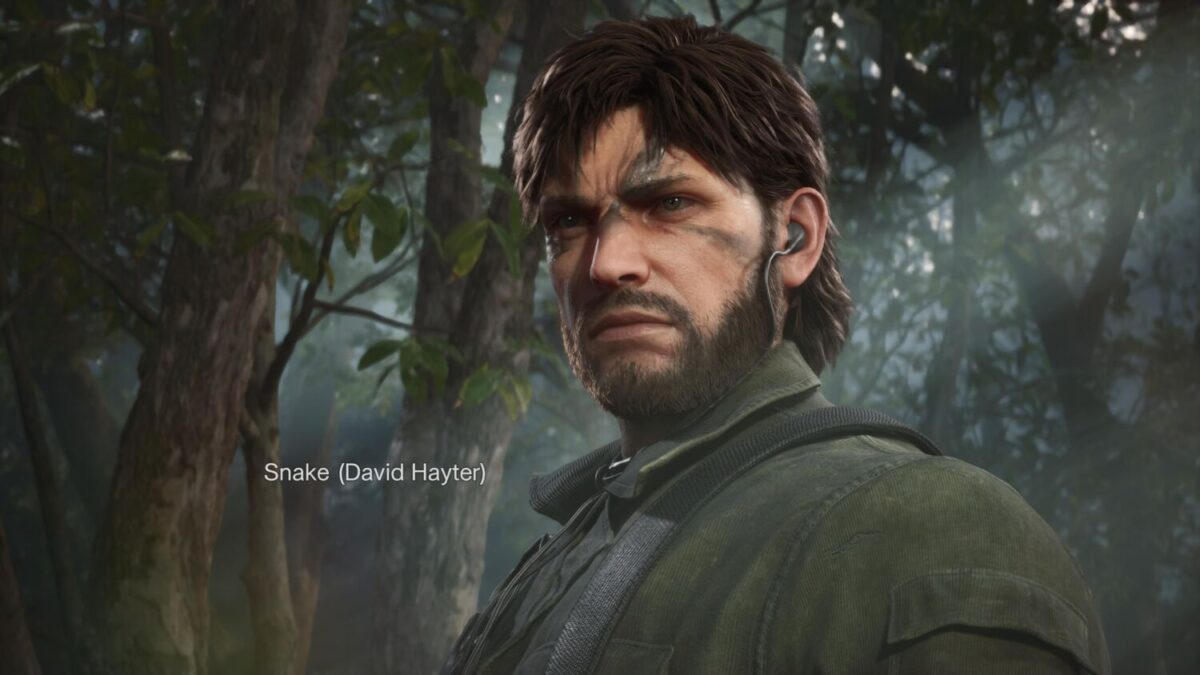
This means that everything is just like how returning fans would remember it, with the same dramatic political espionage tale set against the backdrop of the Cold War. For those uninitiated, our main hero, codenamed Snake, embarks on a Virtuous Mission in 1964, entering Russia behind enemy lines to extract a Soviet defector named Sokolov, a rocket science genius in charge of developing a mysterious war-ending weapon.
Of course, things don’t go as planned, and while trying to extract Sokolov, Snake gets betrayed by his mentor, The Boss, who defects to the Soviet Union alongside her new squad, the Cobras, a team of supernaturally enhanced soldiers, and joins Colonel Volgin of the GRU, who directly opposes the current Russian leadership. The Cobras kidnap Sokolov and force him back to work, leaving Snake with a new mission – infiltrate the Grozny Grad facility to extract Sokolov once again, find and destroy the nuclear-missile-firing tank known as the Shagohod, and eliminate The Boss. It sounds complex now, but Kojima was clearly at the top of his game when he wrote this.
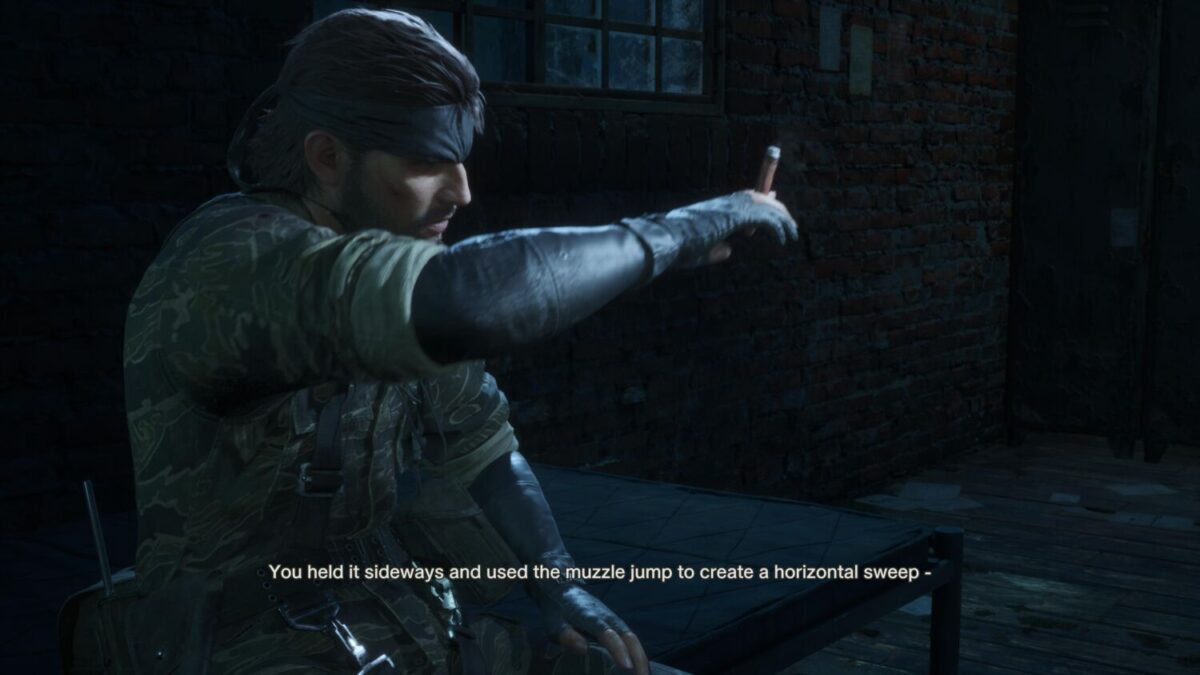
The MGS franchise set the gold standard for many video games and just like the original, the story plays out with the same overdramatic absurdity and dialogue lines that nobody in the right mind would speak in real-life, such as describing the exact features and specifications of a firearm with explicit detail while in the middle of a conversation, or endless out-of-place monologues and “inspiring” speeches that invokes cringe rather than any emotional reaction, this is truly a game of its time.
On the flip side, the game features many elements that are rare to see in this age of censorship and easily-offended audiences, and these aren’t there just for fan-service either, with their inclusion making sense in the game’s context, such as the side character Eva, a spy who uses her sexuality and “assets” to gain an upper hand behind enemy lines. Given the sometimes extreme approach to political correctness in this day and age, Snake Eater is a great reminder of the fun and class of a bygone era, and surprisingly, now a refreshing take on storytelling and characters. If anything, this might help remind gamers of the good old days when writers could weave ideas into their stories without the fear of backlash, and didn’t have to water down their vision to appease specific groups within their audience.

When it comes down to it, Metal Gear Solid Delta’s narrative might prove divisive, especially for those not looking through the rose-tinted lens of nostalgia. Its unapologetically cheesy nature might be charming at first, but can prove tiresome considering cutscenes and dialogue bits take up roughly half of its 10-hour runtime, meaning those looking to jump into the title for the first time have to first understand that this is a serious tale told in an inexplicably goofy manner, and that’s the beauty of it.
This is no different when it comes to gameplay, as minimal changes have been made to its stealth formula when compared to the original. The biggest difference lies in the titles’ new playstyles – ‘Legacy’, which opts for the original bird’s eye view camera angle alongside the old control scheme and first person aiming, and ‘New’, which adopts the now more traditional third-person shooter control scheme, alongside an over-the-shoulder aiming option.
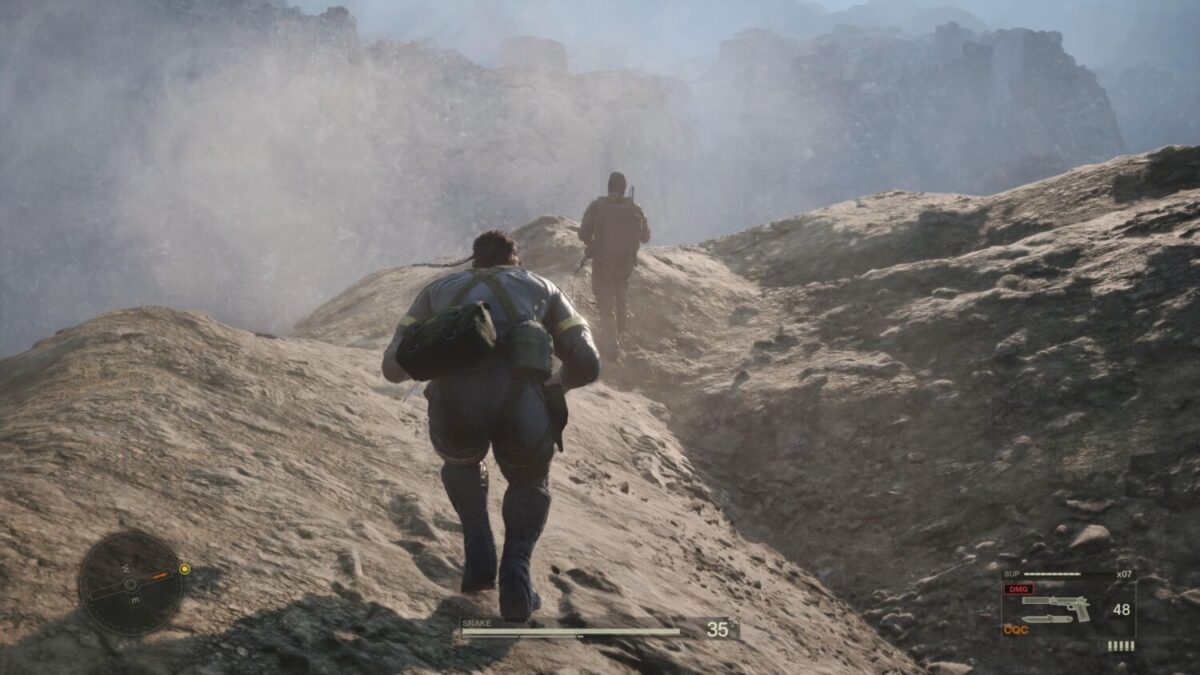
No matter the control scheme selected, Metal Gear Solid Delta plays out in the same stealth-focused format the series is known for. While full-on combat is always an option most of the time, this is a title built around stealth, offering a showcase of that emergent gameplay the series is known for, where almost every action leads to unique outcomes.
While not as vast in terms of stealth options as the later Metal Gear Solid V: The Phantom Pain, the game still features a host of ways to tackle every situation. Apart from crawling through thick grass, sneaking behind enemies and taking them out, which itself is a multi-step process due to enemies able to realistically hear Snake’s footsteps, players can also make use of a number of items to get the upper hand, such as the series iconic cardboard box, or even throwing down an adult magazine to keep guards distracted.
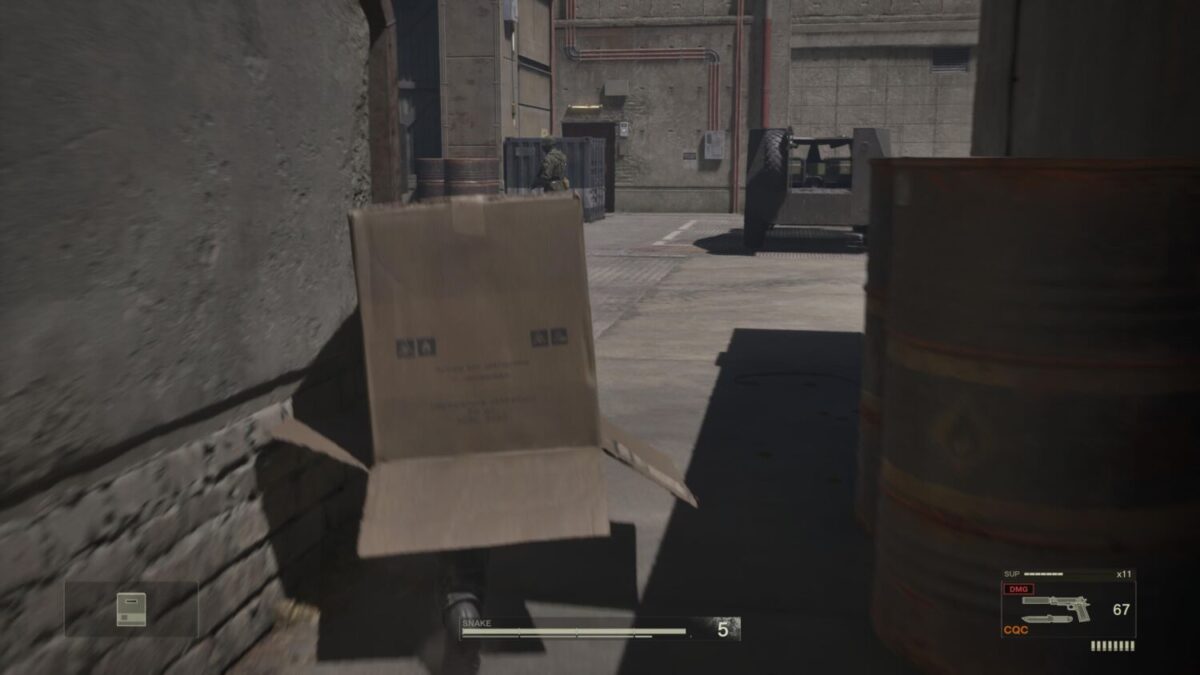
The camouflage system also makes a return, with Snake swapping out different outfits to match whatever terrain he is currently in, with each offering a bonus or detriment to how easily he can get spotted by an enemy. It’s still an innovative system so many years later, and one that has been further streamlined in this version, with players now able to quickswap camo presents by simply holding down a button, eliminating the downtime needed to filter through menus.
This is joined by two other features that further push its survival-style gameplay – the injury and stamina systems. The former comes into play whenever Snake is severely injured, tasking players to manually patch themselves up by using specific medical supplies to treat individual aspects of a wound.
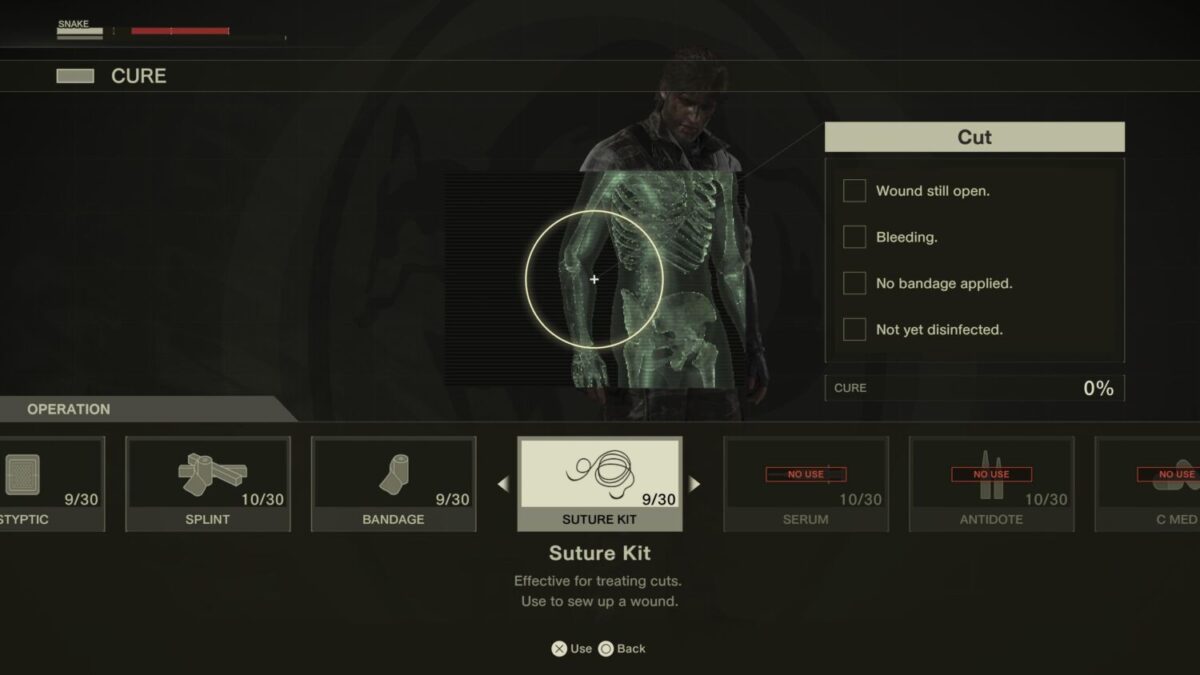
Gunshot wounds, for example, must be treated by first using a knife to remove the bullet, closing it with a Styptic, then covered with a bandage and finally disinfected. Injuries come in a variety of types, such as burns, cuts or even attached leeches, each with its own steps to treat, meaning players will constantly have to be on the lookout for each type of medical item to efficiently heal their wounds. In a rather neat touch, every major wound inflicted also leaves Snake with permanent scars, potentially making every player’s Snake different by the end of the game, depending on how well they perform.
The stamina system, on the other hand, forces players to constantly keep stock of edible items to fuel Snake along his journey. This constantly draining meter can be replenished by many animals or items encountered in the environment, from harvestable mushrooms to Soviet field rations, and even full-on animals like giant fish, spiders or vultures, with each item giving a different amount of stamina recovery and even special effects for some.

And it’s always a good idea to keep Snake well fed, as running out of stamina leads to a variety of negative debuffs, such as slower natural health regeneration, shakier aim, shorter time to hold your breath while swimming, or reduced accuracy. Most interesting of all, Snake’s stomach will start to growl when he is hungry, which alerts enemies near him, which is a humorous yet realistic use of what’s otherwise a common system seen in other games.
It’s this dedication to realism that shows how well certain aspects of the game have held up over time, with little minute details that add to the immersion of the title, helping to maintain the illusion that this is a living, breathing world that reacts to a player’s action every step of the way. Some other examples include leaves sticking to Snake’s legs when leaving high grass, him walking over bodies realistically instead of simply phasing over them, and Vultures landing and eating the bodies of fallen enemies in the mountains.
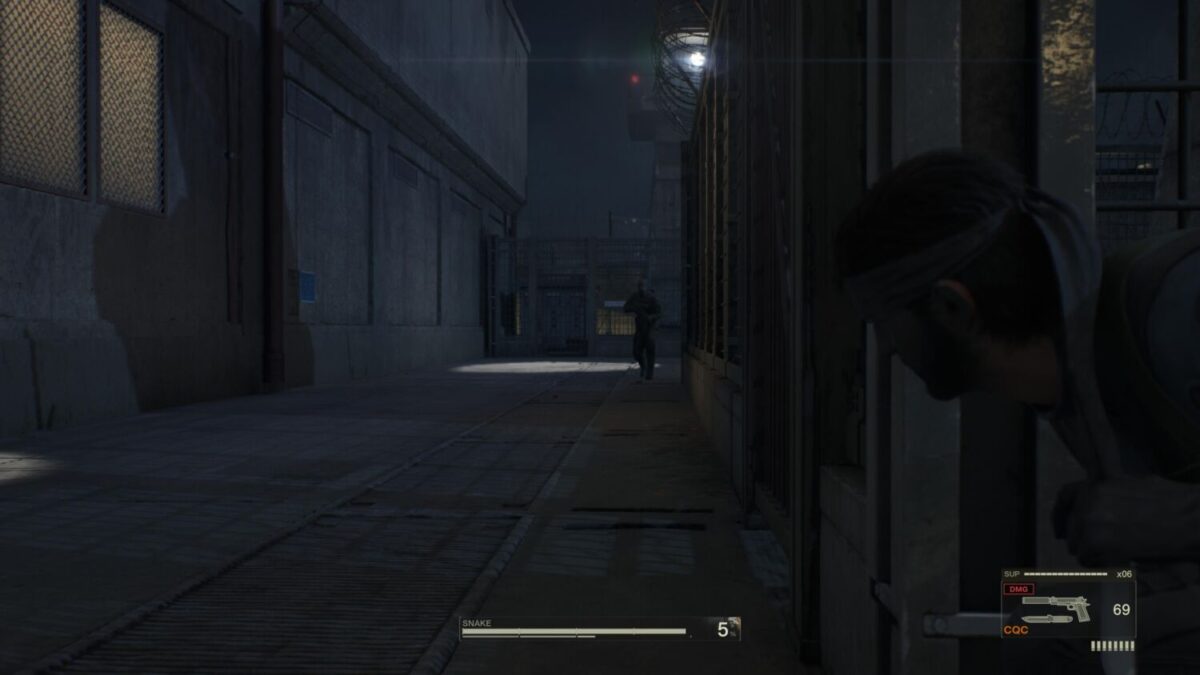
Despite this, the game is far from perfect. Look a little closer, and its cracks in gameplay start to show, particularly in terms of Snake’s movements. Controlling Snake can be a frustrating affair, especially in close quarters, as his movements are extremely floaty, meaning that players can accidentally overshoot pieces of cover if they’re not careful, leading to some cases where being spotted can feel unfair. Cover is one system that hasn’t particularly aged well, as the game requires players to hold down the movement stick towards cover to stick to it, and sometimes, this outright doesn’t register, leading to instances where a player will unintentionally walk out from behind the object and get spotted.
Although clearly not the focus, gunfights are particularly dull too, with aiming using the new over-the-shoulder never feeling quite right compared to the more traditional first-person view. The aforementioned unreliable cover system also serves to its detriment here, meaning employing tactical cover to cover movements advance on faraway foes simply isn’t an option. Enemies are also ridiculously bullet-spongey when not aiming at their head, meaning fights can either be too easy or too drawn out, depending on where a player aims their sights, with no balanced middle ground.
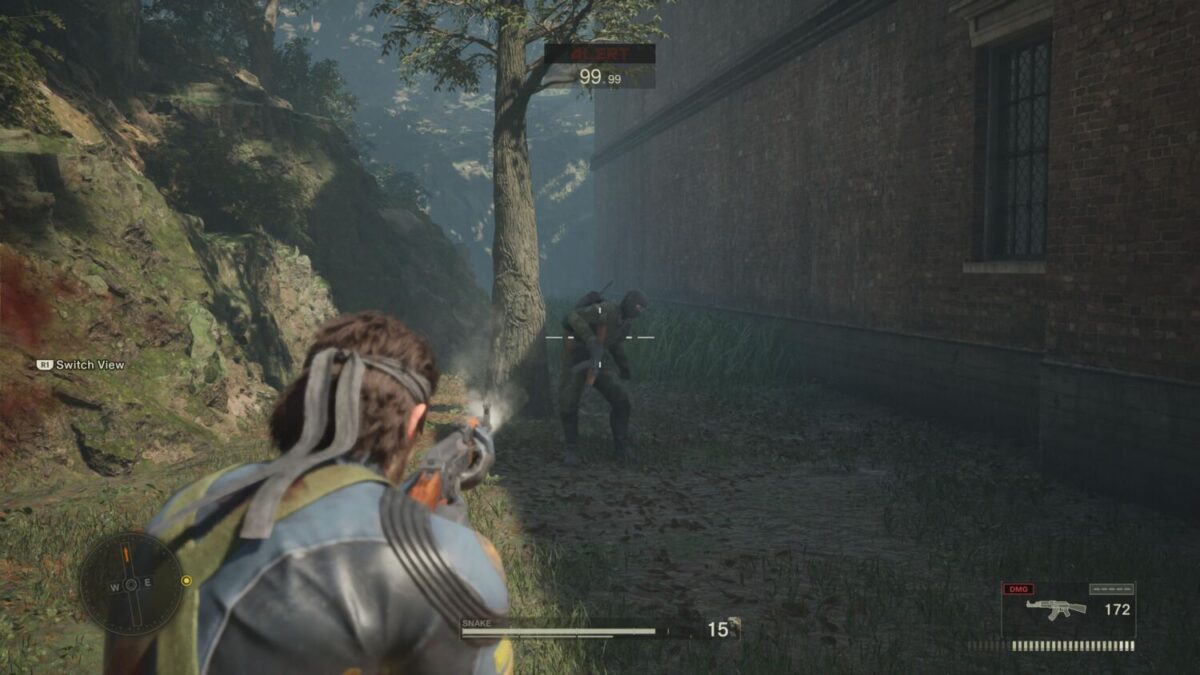
Boss fights are also hit and miss, usually boiling down to the same pattern of hiding and waiting for an opening to shoot back, although players familiar with the unique systems of The End and The Sorrow’s encounter will be glad to know that these at least have been kept intact. Still, it feels like a missed opportunity to freshen up the others with unique systems of their own and make them truly unique, because as it stands, the other bosses just feel like copy-and-paste clones of each other.
And then, there’s the dated level design. Much like the original title, Metal Gear Solid Delta is split into small-sized areas, each separated by a loading screen, and players will soon start to get really familiar with each of their layouts, as the game often tasks players with backtracking to previously explored locations over and over, which again, does line up with the games original vision and layout, but especially considering today’s gaming standards, level loading screens should firmly be a thing of the past.
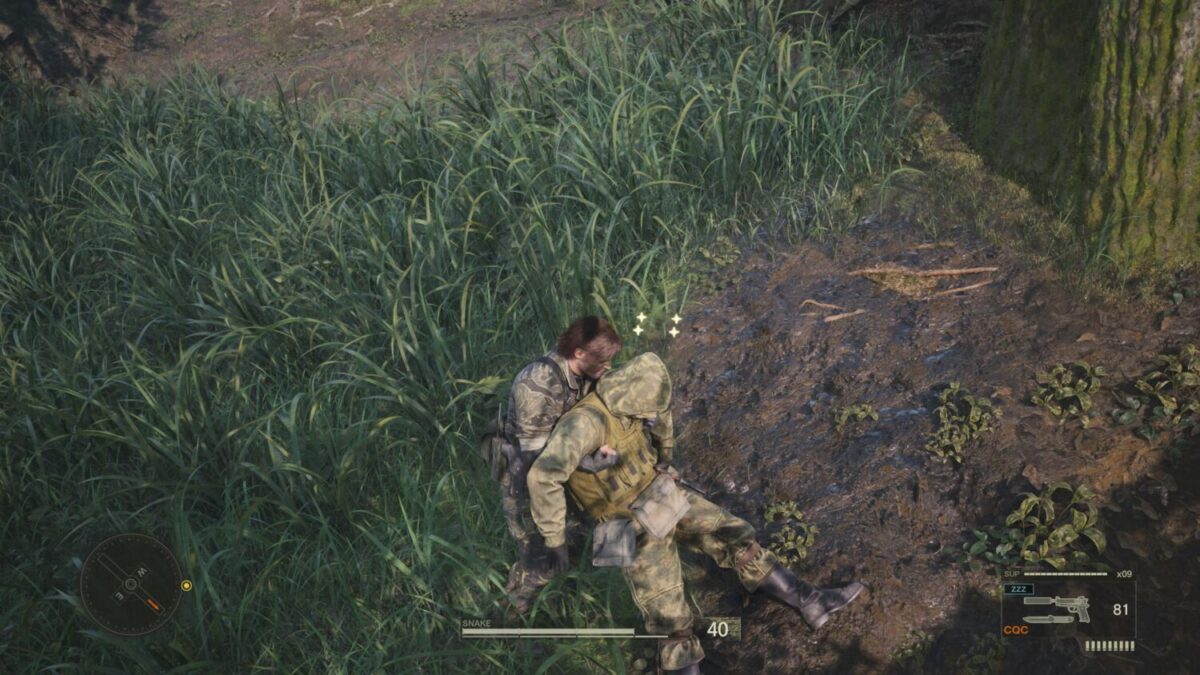
Finally, there’s the performance, and while previous criticisms can still be forgiven due to the remake faithfully adopting its source material, the game’s poor framerates are inexcusable. Running on the base PlayStation 5, the game hardly hits its targeted 60fps on performance mode, save for interior scenes with barely any environmental props.
Vegetation in particular causes a major hit on performance, and judging that players will be spending a decent bulk of their time in forests means they have to deal with said sluggish framerates constantly. The title also suffers from sudden performance drops, like in a late-game area, a relatively small hangar bay with a giant tank at its centre, the framerate would plummet to the low 40s whenever the camera is pointed at the vehicle, resulting in an uneven overall gameplay experience.
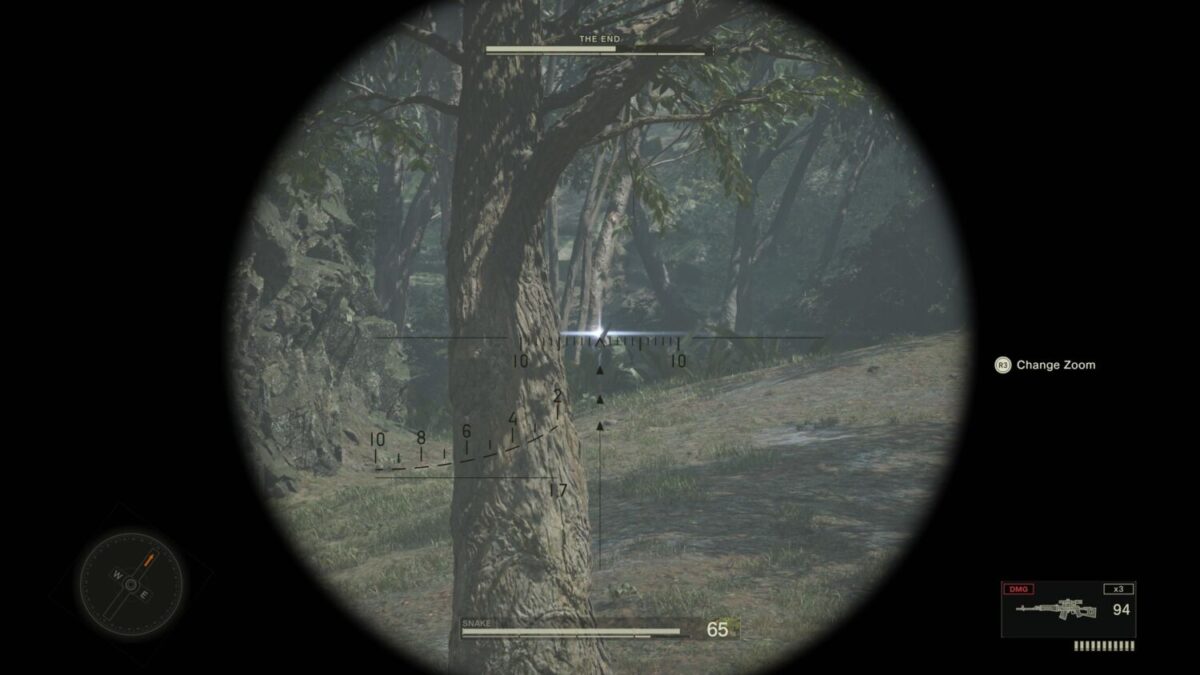
At least the one major difference between Metal Gear Solid Delta and the original, its revamped graphics, is one aspect of the game that has really paid off. Built in Unreal Engine 5, it’s a truly remarkable leap in visual fidelity, breathing new life into every otherwise unchanged cutscene and playable area.
Performance hit aside, the forests of the game really stand out now with the added density of the grass and trees, giving a better illusion of scale and making the small areas appear much larger than they seem. This upgrade extends to the game’s other outdoor environment, too, the hilly mountain ranges, with players now able to see far into the distance. Coupled with the aforementioned tiny yet impactful little details strewn in throughout, Metal Gear Solid Delta’s graphical overhaul will no doubt serve to finally allow returning fans to experience the game that now looks like how they probably remembered it back in the day.
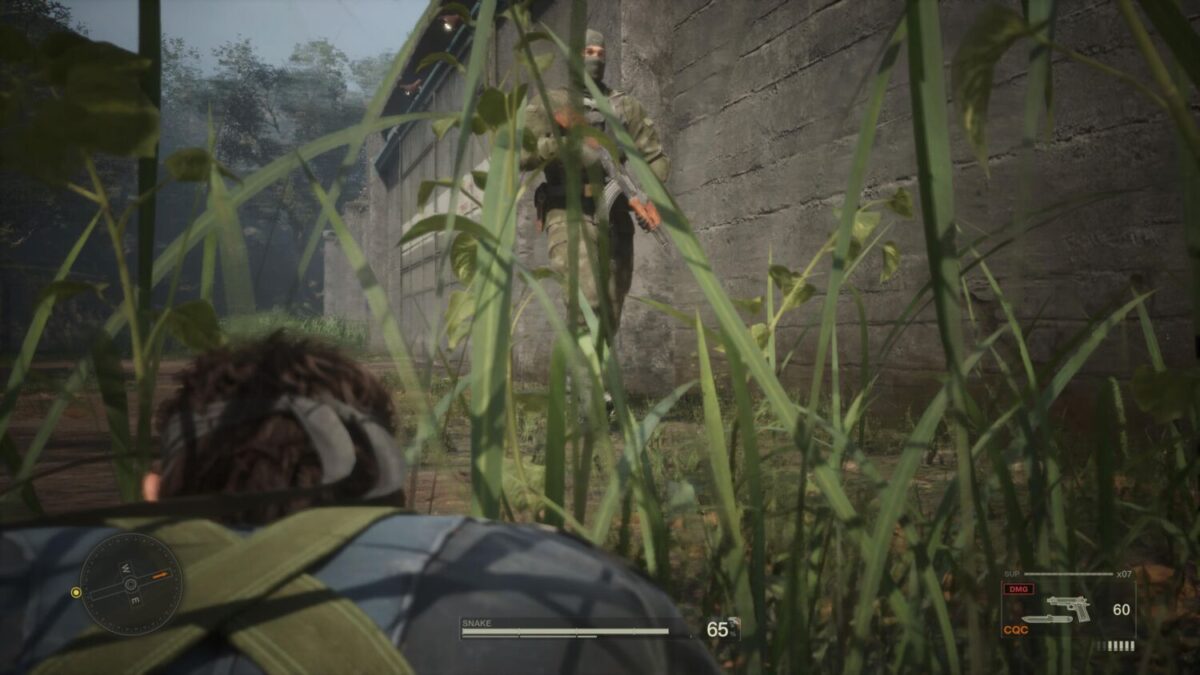
When it comes down to it, Metal Gear Solid Delta: Snake Eater is a tough title to judge, as its faithfulness in adapting the timeless stealth-action classic, although one that should be commended and even applauded, does have the downside of amplifying just how dated some of the original title’s systems feel in the modern gaming context. Still, this remake is undoubtedly the definitive version of Kojima’s third tactical espionage action adventure, and one that should be enjoyed by both returning fans and newcomers, although for the latter, it’s best to alter expectations before jumping in.
GEEK REVIEW SCORE
Summary
For better or worse, Metal Gear Solid Delta: Snake Eater takes the concept of a faithful game remake to the letter, enhancing its graphics for the modern age while maintaining the spirit of the original title, dated quirks be damned.
Overall
7.9/10-
Gameplay - 8.5/10
8.5/10
-
Story - 8/10
8/10
-
Presentation - 7.5/10
7.5/10
-
Value - 7.5/10
7.5/10
-
Geek Satisfaction - 8/10
8/10

